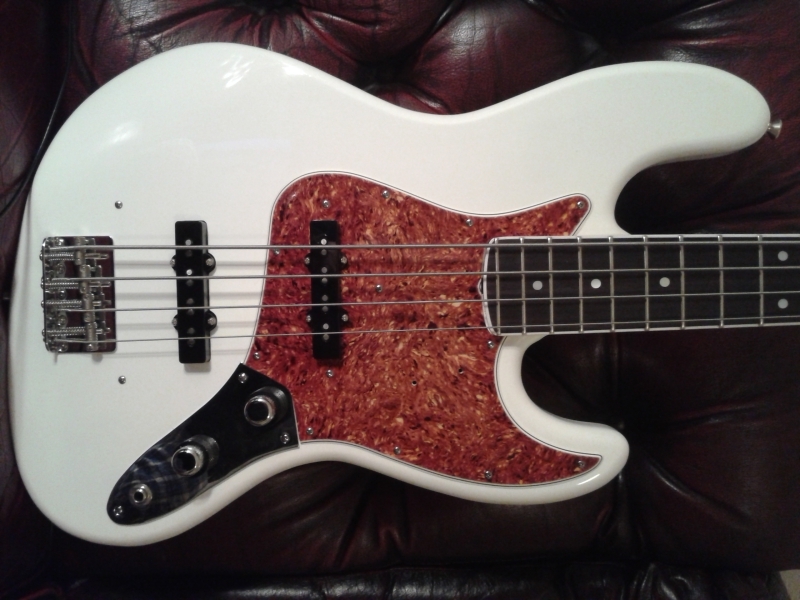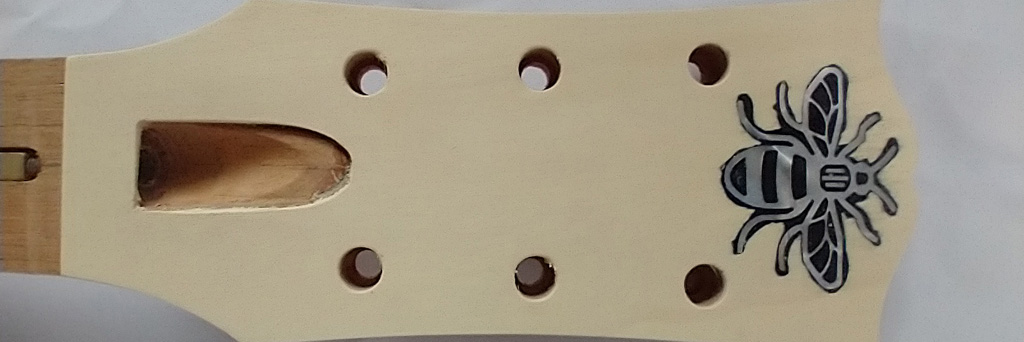
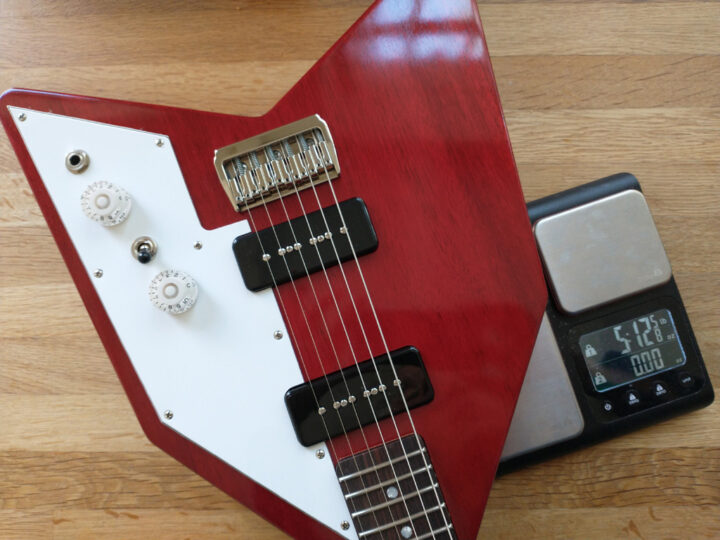
This concludes the article started at Recreating the Everyday Electronics Delta Electric Guitar (Part 1). Finishing the guitar I simply sprayed the neck using my Clear Satin nitrocellulose lacquer. I sprayed a sealer coat then de-nibbed using fine sandpaper before spraying a couple more coats. I “designed” a logo for the headstock, laserprinted it on …
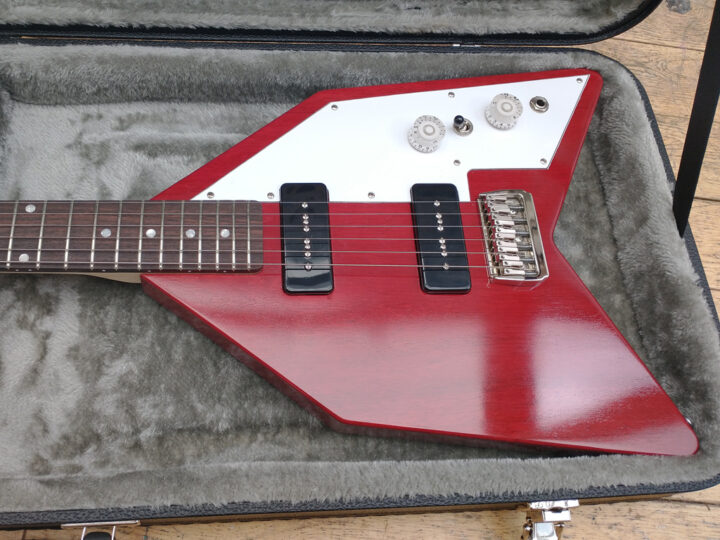
Almost 50 years ago. in 1974, I was a guitar obsessed teenager who loved to make things. A popular hobbyist magazine, “Everyday Electronics” ran an article on making an electric guitar in its October issue. The magazine included plans and instructions on how to make just about everything (PDF available here). How could I resist? …
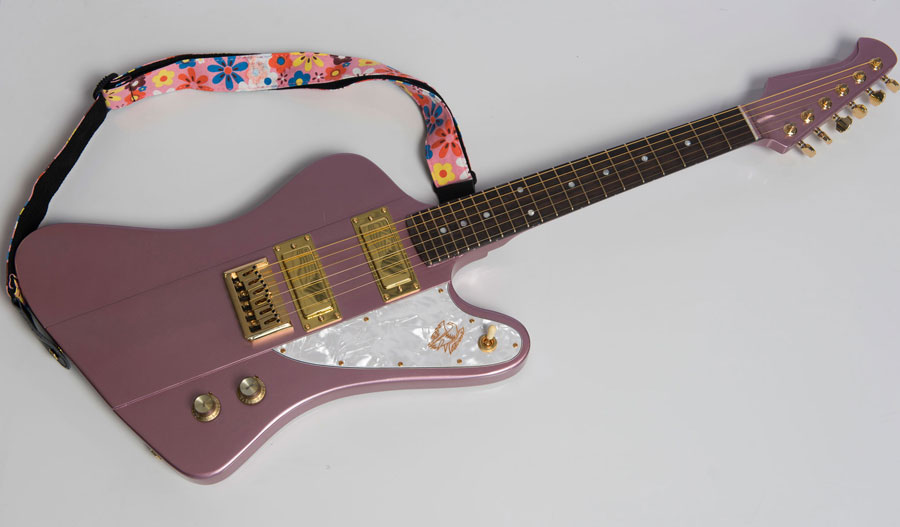
Inspired by a guitar forum challenge to modify a guitar I decided to make my Granddaughter a Firebird based around a Harley Benton mini strat from which I’d use just the neck. I chose a left-handed guitar as the donor so that my guitar would have a reverse headstock. I carved the headstock to have …
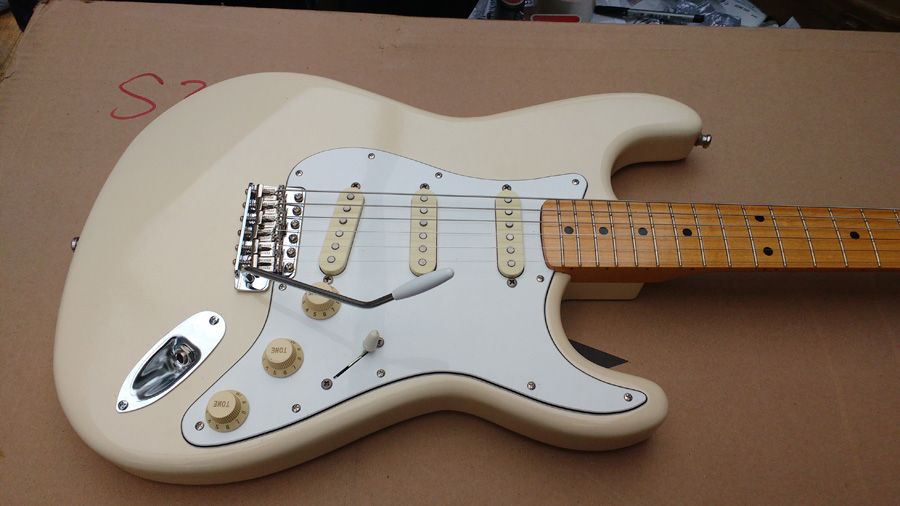
I’m putting together a Stratocaster for a friend. It’s to match a Telecaster he has so will be painted in a creamy colour. This is the look we are going to achieve: The body, as is usual, is from Guitarbuild and it’s a beauty. Made from alder, it arrived really well sanded so virtually no preparation was …
I often get asked how to spray a TV Yellow finish and have been meaning for a while to demonstrate the process, so here it is. I think it’s unlikely that TV Yellow guitars left the factory as yellow as they are today. As with “butterscotch” Telecasters the colour has become more yellow over the …
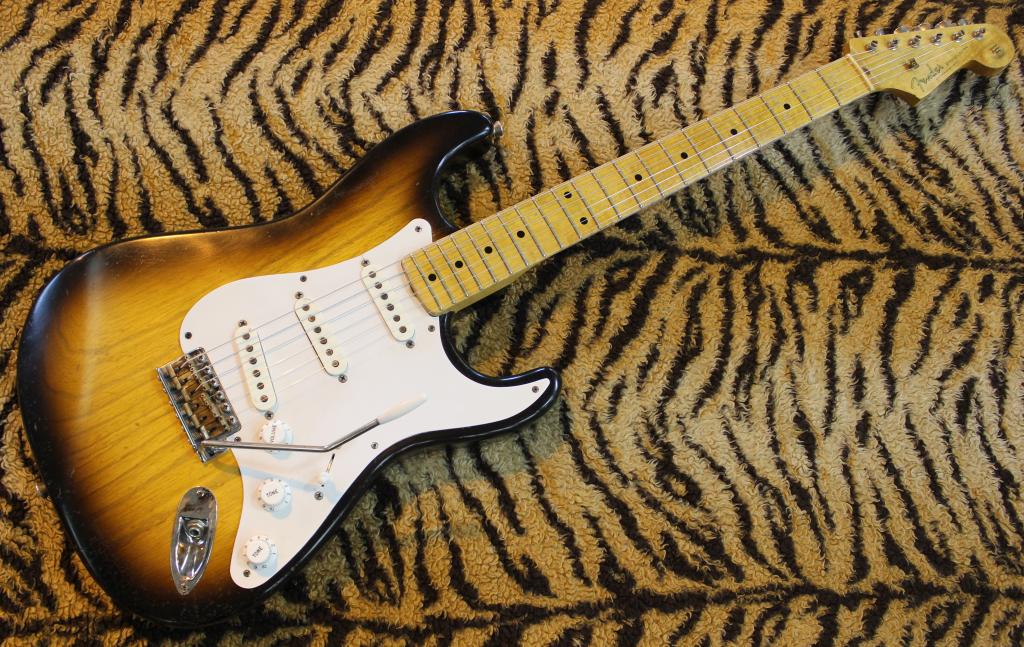
Tony is another regular customer who has produced some superb guitars painted using my nitrocellulose lacquer. I think he has excelled himself with this superb tribute to an early Fender Stratocaster using neck and body from Musikraft. Take a look at Tony’s post on TDPRI where he shows how be sprayed the sunburst and aged the …
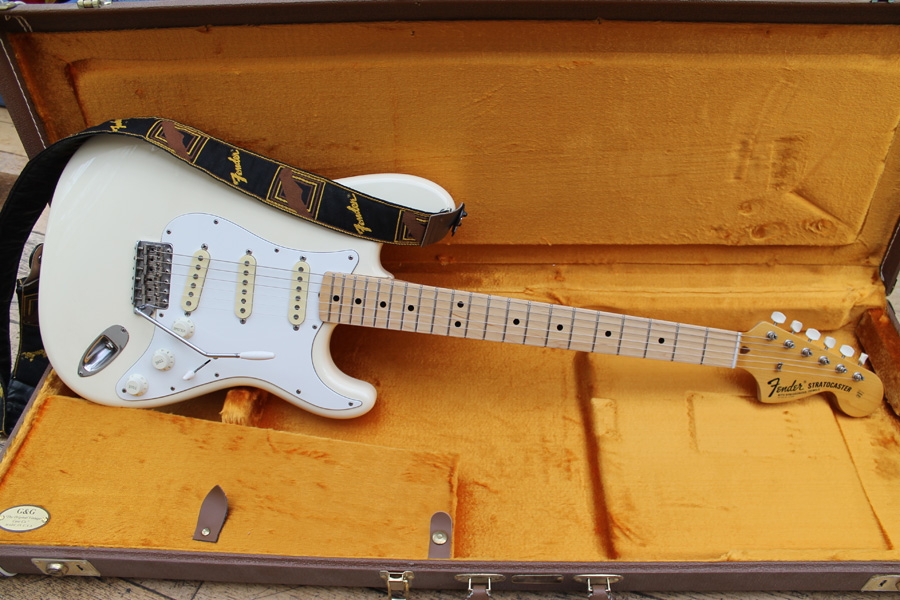
I have now fitted the neck that I fretted and lacquered to my Fender 62 reissue Stratocaster. Apologies for not photographing the stages of fitting the tuners and cutting the nut but these steps are covered elsewhere on my blog. You can see that I fitted some original F-logo tuners. They are actually from a Fender Mustang …
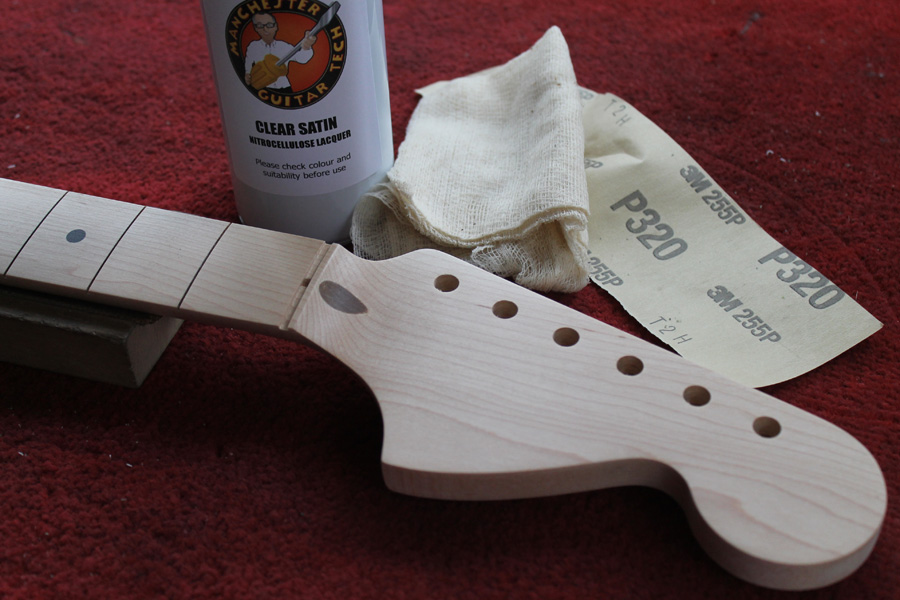
I thought I’d demonstrate fretting a neck and finishing it with nitrocellulose lacquer. The neck I used was very nicely made, with a compound radius fretboard which progresses up the board from 7¼” to 10″ radius. The back is a nice soft V at the first fret, rounding out towards the heel. A compound radius isn’t …

